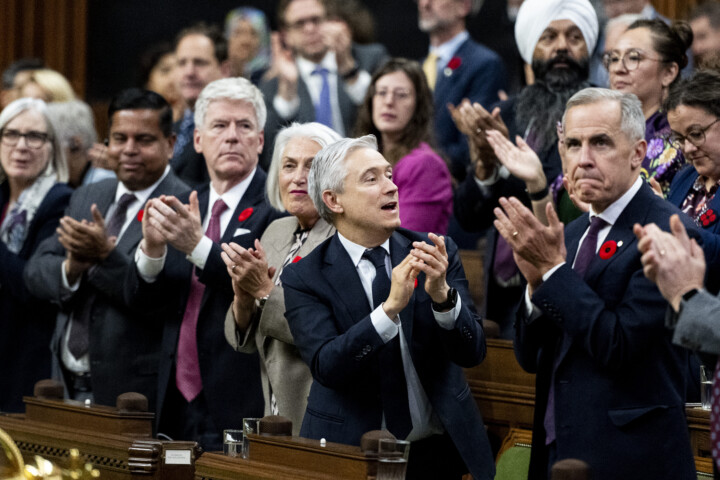There may be a much better way to fund news media than the tax credits Ottawa has been handing out for the past five years, and best of all it would more democratically leave the funding decisions to readers. A voucher system that gave everyone an annual amount to spend on the subscriptions of their choice could help to both speed our news media’s halting transition to sustainable digital publications and restore the plummeting levels of public trust in them.
The District of Columbia became the first jurisdiction in North America to float such a system when it introduced a Local News Funding Act late last year which, if passed, would allocate USD $11.5 million (CAD $15.6 million) a year, or 0.1 percent of its annual budget, for D.C. residents to spend on local news subscriptions. It’s an idea that has been gaining traction recently because tax credits tend to favour large corporate players and marginalize emerging online news media.
Vouchers were recommended by a 2023 Council of Europe report specifically because they are so democratic. “Vouchers constitute a system of support that shifts subsidy decisions from public authorities to individual users,” it noted. The report cited, as an example of a similar system, Canada’s 15-percent income tax credit for digital subscriptions, which was introduced by Ottawa as part of its 2019 news media bailout and gives taxpayers a maximum of $75 back when filing their annual tax returns, but it requires an up-front expenditure of $500 to get the full amount.
Such a meagre rebate, the report noted, was “considered potentially too low to substantially increase the number of subscriptions.” It pointed to the income tax credits proposed in the U.S. under its 2020 Local Journalism Sustainability Act, which was never voted on, as being much higher at 80 percent in its first year and 50 percent in the next four.
Vouchers were also proposed by an international group of economists and media scholars in 2019 as a way to help revive local news. Their proposal addressed a common complaint about vouchers, which is that they would further enrich the most popular publications, by limiting the amount any outlet could receive to 1 percent of the total. “With media vouchers, dependence on public funding won’t compromise the independence of the media,” they added. “This advantage results from the fact that in our model the media vouchers are allocated by citizens themselves.” Vouchers were preferable to tax credits, they argued, which disproportionately benefit large media companies, because they would promote competition in the industry, ensuring pluralism is protected.
Another advantage of vouchers, they noted, was that they could help to increase public trust in news media, which has been in freefall recently. As The Hub has recently documented, government funding of the news industry is an important contributing factor to this decline.
Public trust could also be boosted by the transparency requirements of the proposal, as media outlets would have to publish a list of their shareholders owning more than 1 percent, along with their other sources of income, in order to illuminate any conflicts of interest. Publications would also have to publish their annual financial statements online and make public their articles of association and corporate governance. This condition follows the same requirements of public funding of political parties.
Eligible outlets would also have to abide by a code of ethics written by news media stakeholders to avoid the public funding of disinformation and other harmful content. The thorny issue of judging compliance would fall to an Independent News Monitor that would include journalists, media owners, and scholars appointed to four-year non-renewable terms. At least half of every voucher would have to go to local news media. “This funding mechanism is highly cost effective: $50 per US adult is likely to be sufficient,” they suggest. That would make the total cost USD $13 billion (CAD $17.7 billion) a year.
The Washington-based Democracy Policy Network proposed a state-level program of what it called Local News Dollars last year that would similarly issue residents with vouchers to support the news media of their choice. “The outlets, in turn, collect money from the state government for each voucher they receive,” noted the proposal. States would set eligibility criteria, but beyond that would make no decisions about which outlets received funding. The proposal suggested issuing vouchers worth USD $150 (CAD $200), which could be split and given to for-profit outlets, non-profits, or both.

Postmedia newspapers, including the National Post and Ottawa Citizen, are shown with Quebecor Media’s Ottawa Sun on Monday, Oct. 6, 2014. Justin Tang/The Canadian Press.
News outlets that got funding would have to disclose their expenditures, ownership, management, and funding sources, and there would be a cap on the amount any publication could receive. “Vouchers should be allocated through a state website that provides an easy way for residents to register, log in, verify eligibility and allocate their vouchers,” it noted. “There is no need to use tax returns.” One innovative aspect of this proposal could be a limited budget, allocated on a first-come, first-served basis, so that vouchers might run out, meaning that some people could lose their entitlement if they didn’t use it quickly.
The Democracy Policy Network proposal aimed to “solve the puzzle of funding journalism” while keeping the government neutral as to its content and diffusing to the public any decisions on funding. “The more concentrated the decision-making power, the more the decision-making process will become a target for influence by the wealthy and powerful,” it noted, pointing as an example to Canada’s 2019 media bailout, which saw large newspapers use their influence with Ottawa to get the vast majority of funding. “News Dollars should work to increase the number and variety of news outlets rather than merely add to the revenue streams of existing outlets,” it further cautioned.
Relying on formulas or metrics alone to allocate media funding was also subject to abuse as powerful entities with more resources can attempt to game formulas or algorithms. Limiting eligibility rules and erring on the side of maximum transparency, are the best ways to mitigate such exploitation, they suggest.
The Seattle Times panned the proposal as biased against commercial news, claiming it had an “ideological tilt” and noting that most local news reporting was done by for-profit media that were struggling to survive. “More than 90 percent of newspapers are for-profit and nearly all depend on subscriptions to fund their journalism,” wrote Brier Dudley, editor of the independent daily’s Save the Free Press Initiative. “The news industry won’t survive if it fails to reverse dot-com-era perceptions that news is free.” The proposed cap on how much an outlet could receive, Dudley added, would limit them to hiring “perhaps three to five full-time journalists with voucher funding.”
The tide seems to have turned in favour of public subsidies—even in the U.S.—and against mandating payments to publishers from digital platforms, as Illinois and California have proposed. The advocacy group Free Press called the California Journalism Preservation Act introduced last year a “massive giveaway to large and already-profitable media companies.” The bill would see corporations and hedge funds get almost all of the proposed payments from Google and Meta, it noted, with independent newspapers and non-profit media outlets being marginalized. “The CJPA, however well-intentioned, would result in a windfall of payments flowing to wealthy broadcast-television firms, hedge funds and nationally focused news and entertainment outlets.”
Free Press pointed to the “disastrous consequences for local news outlets” of Canada’s similar Online News Act, which was also recently panned by The Economist magazine for harming our news media instead of helping them.
Using vouchers to fund news media would be more democratic and equitable than wealth redistribution from the digital giants or even payroll tax credits, and they could also help to increase public trust in the news. It is time to seriously consider them as an alternative solution.








